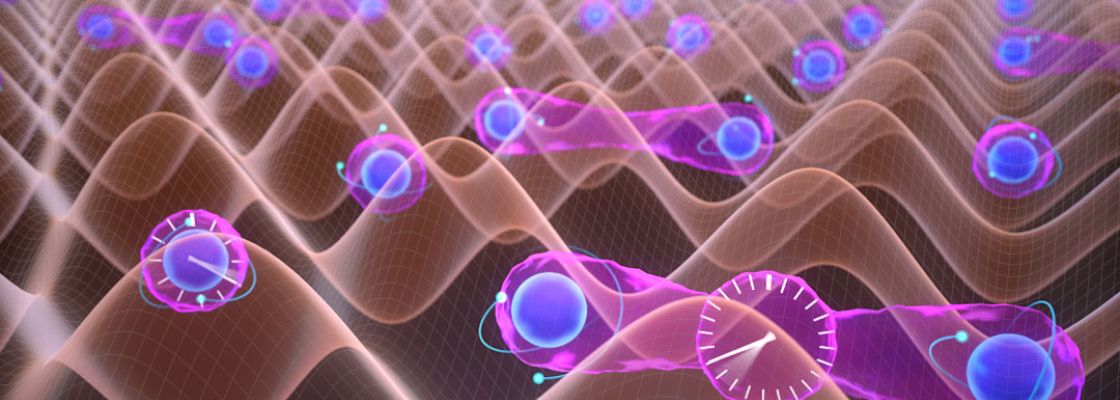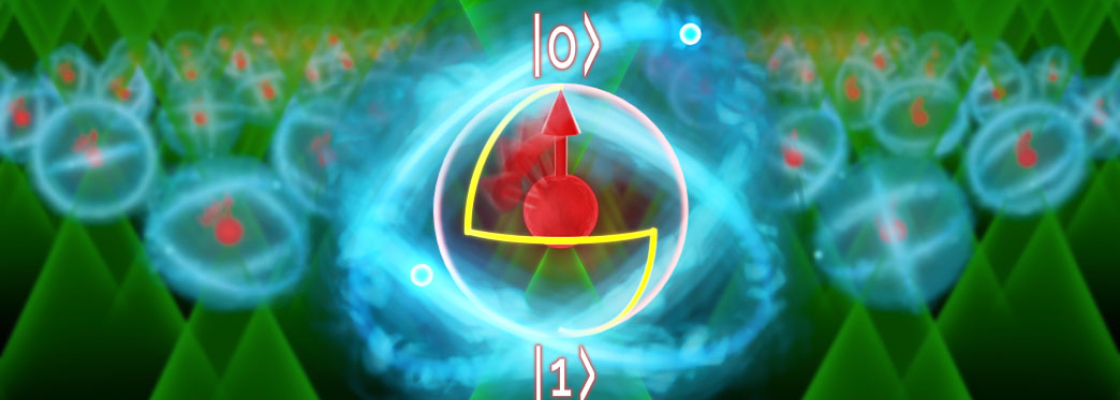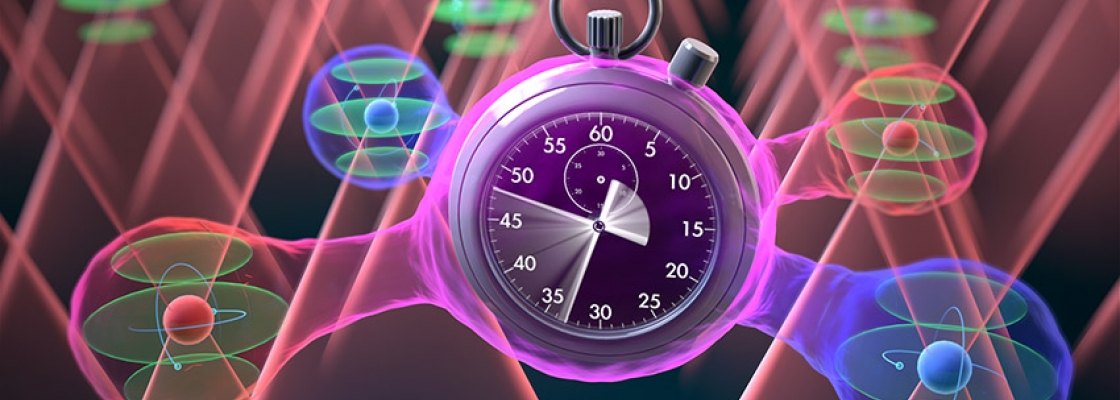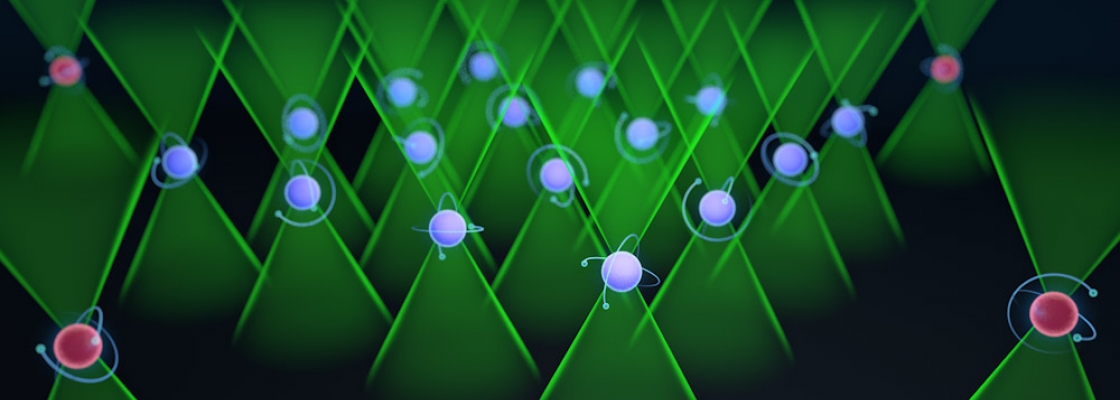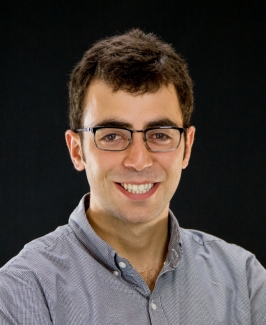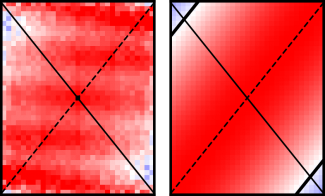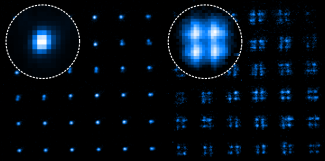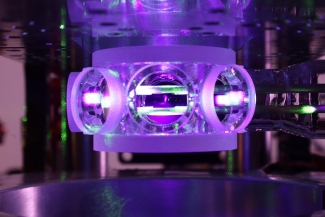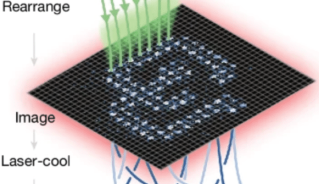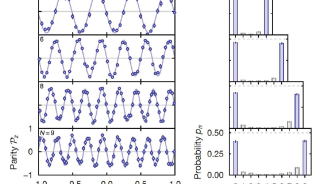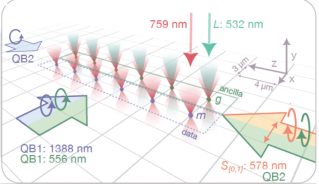About the Kaufman Group
How does classical physics –- such as statistical mechanics — emerge from the collective behavior of quantum mechanical systems? Can we develop new tools for the manipulation of individual particles, such as complex atoms, ions or molecules, whose interactions and internal degrees of freedom establish new prospects for quantum science?
To answer questions like these, our group applies the tools of atomic, molecular, and optical physics to the microscopic study and control of quantum systems, for applications in quantum simulation, quantum information, and metrology. We marry the tools of quantum gas microscopy, optical tweezer technology, and high precision spectroscopy in order to gain single-particle control at fundamental length scales and very small energy scales.
Towards these goals, we trap single alkaline-earth atoms in optical tweezer arrays, a powerful and effective technology that we demonstrated in 2018 for the first time. Optical tweezers allow precise single-particle control, the engineering of different forms of atomic interactions, and high-fidelity atom-resolved readout. However, while previous work with optical tweezers had focused on alkali atoms, the 2018 work opened the door to tweezer-based control of atoms with two electrons in their valence shell -- although a tiny addition, this additional electron gives rise to the rich internal structure of alkaline-earth atoms, which underlies their applications in metrology, quantum simulation, and quantum information. In this lab, we apply the microscopic control capabilities emerging from the optical tweezer toolset to the quantum science directions that emerge from the use of alkaline-earth atoms.
Research Areas
One of the scientific pursuits for which alkaline-earth atoms are most famous is optical atomic clocks. In atoms like Strontium and Ytterbium, there exists a long-lived optical transition known as the “clock transition”. Viewed as an oscillator, this transition has an intrinsic quality factor of in excess of 1017— that is, it can ring quadrillions of times before the oscillations die out. This means this oscillator can serve as an exceptional time-keeper, and, indeed, in the past decade, such optical atomic clocks have allowed some of the most precise measurements ever made by humans.
Another appealing aspect of alkaline-earth atoms is the presence of a second relatively narrow transition — though not as narrow as the clock transition — that can be used for ground-state laser cooling. This is especially powerful when combined with the possibility of rearranging optical tweezers to prepare arbitrary atomic distributions with very low entropy in the atomic spatial distribution. So far, large-scale demonstrations of atomic rearrangement have been used for spin models, with atoms that might be relatively hot in their motional degrees of freedom. In this project, we seek to prepare arbitrary distributions of scalable arrays of ground-state atoms for large scale itinerant models.
Unlike their bosonic counterpart, fermionic isotopes of alkaline-earth atoms benefit from having nuclear spin. This spin has been proposed for new many-body models, such as SU(N) physics, as well as the basis for new qubit architectures. In a new experiment, we seek to gain single-qubit-resolved control of arrays of Ytterbium-171 atoms, where quantum information is stored in the spin-1/2 nuclear spin of this isotope. We seek to engineer the resulting system to fully exploit the high two-qubit gate speeds possible with large Rydberg Rabi frequencies from the excited clock state.
In the Spotlight
We recently demonstrated a new architecture for programmable control of Hubbard systems of neutral atoms. Here we used this platform to prepare and control systems of up to 180 particles. We study how their dynamics realize the boson sampling problem, originally formulated for photonics. You can read more about here. Congratulations to the team!!
Read More
We have demonstrated a family of multi-qubit gates to create GHZ states on the optical clock transition in strontium. We use these to show atom-laser clock comparisons below the standard quantum limit. We also create cascade GHZ states for large dynamic range phase estimation. Congratulations to the team!!
Read More
After ~six very productive years, Aaron defended and graduated (on Nov. 1, 2023)! Congratulations Dr. Young! We are sad to see you go but very excited for your next adventure in the Greiner group!
Read More
JILA Address
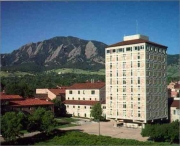 We are located at JILA: A joint institute of NIST and the University of Colorado Boulder.
We are located at JILA: A joint institute of NIST and the University of Colorado Boulder.
Map | JILA Phone: 303-492-7789 | Address: 440 UCB, Boulder, CO 80309






